Key takeaways:
- Feedback in education is essential for growth, requiring a balance between emotional delivery and educational purpose.
- Effective feedback strategies include clarity, using the “sandwich method,” and fostering a two-way dialogue for continuous improvement.
- Receiving feedback involves active listening, asking open-ended questions, and expressing gratitude to create a culture of trust.
- Implementing feedback transforms learning experiences and promotes a mindset of continuous improvement.
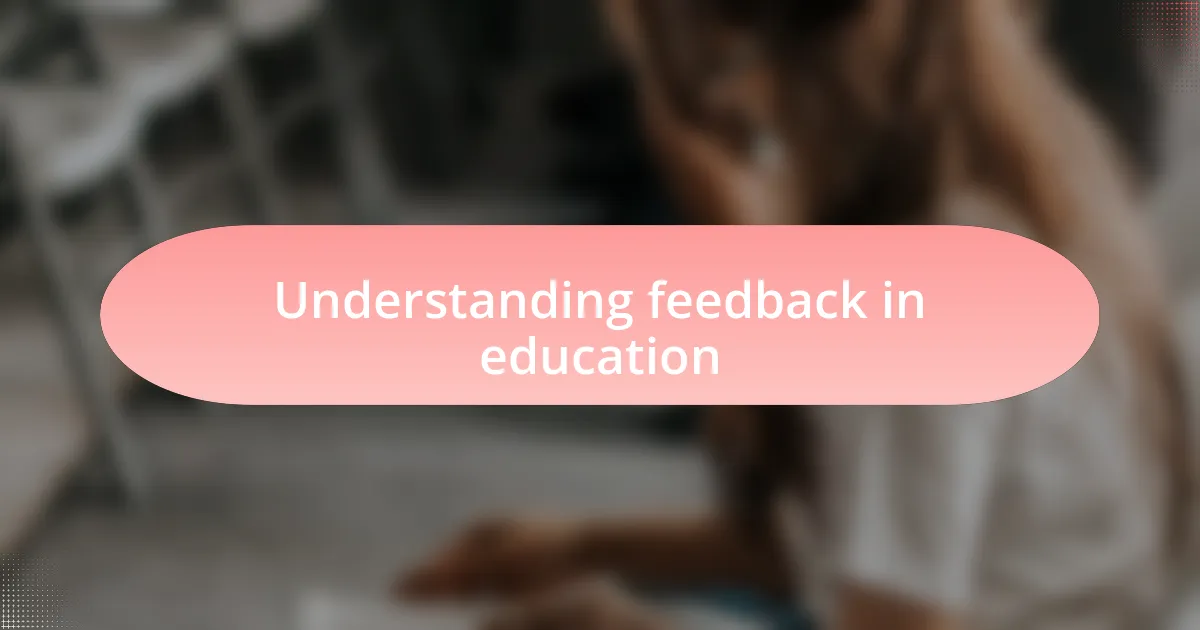
Understanding feedback in education
Feedback in education is essential, acting as a crucial guide for both educators and learners alike. I remember a time when my mentor gave me constructive criticism on a project; initially, it was hard to hear, but it forced me to reflect and refine my approach. Isn’t it fascinating how criticism can spark growth?
Understanding feedback also means recognizing its multifaceted nature. It can be formal or informal, verbal or written, and varies greatly in tone and delivery. I find that positive affirmation often boosts motivation, while pointed challenges encourage deeper analysis. Have you ever considered how the manner in which feedback is delivered can significantly impact its effectiveness?
Moreover, the emotional weight of feedback cannot be understated; it can evoke feelings ranging from appreciation to defensiveness. I once received a peer review that cut deeper than intended, but it motivated me to strive for improvement. How do we balance the emotional aspects of feedback while ensuring it serves its educational purpose? Achieving this balance is key to fostering a growth-oriented learning environment.
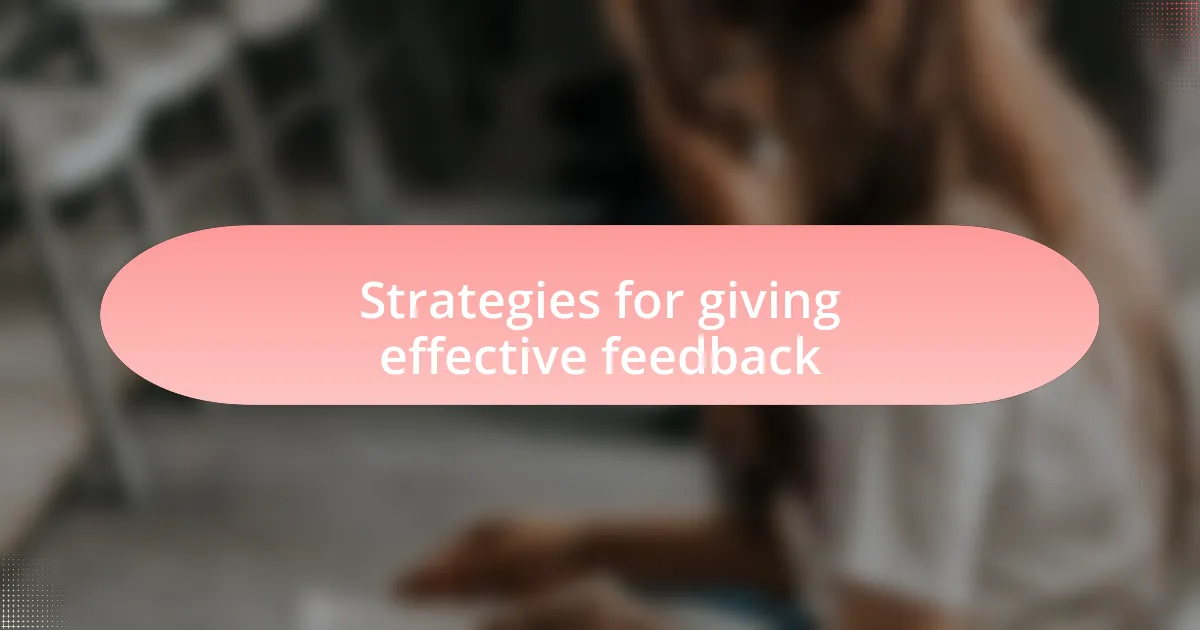
Strategies for giving effective feedback
When giving feedback, clarity is paramount. I recall a time when I provided feedback on a colleague’s presentation, and instead of vague remarks, I focused on specific examples. This approach not only made it easier for them to understand where improvement was needed, but it also opened up a dialogue where they felt comfortable asking questions. Have you noticed how precise feedback can create a more productive conversation?
Another strategy I’ve found effective is using the “sandwich method,” where positive comments are placed around constructive criticism. This technique softens the blow and encourages receptiveness, especially when emotions run high. Once, I delivered a complex set of critiques using this method, and the recipient left feeling uplifted instead of deflated. Isn’t it amazing how a little framing can change perceptions?
Finally, I believe in making feedback a two-way street. Inviting responses from the person receiving feedback fosters a culture of continuous improvement. The last time I asked for input on my comments, the exchange enriched not just the individual’s growth but also my understanding of their perspective. How often do you engage in this reflective dialogue to deepen your insights?
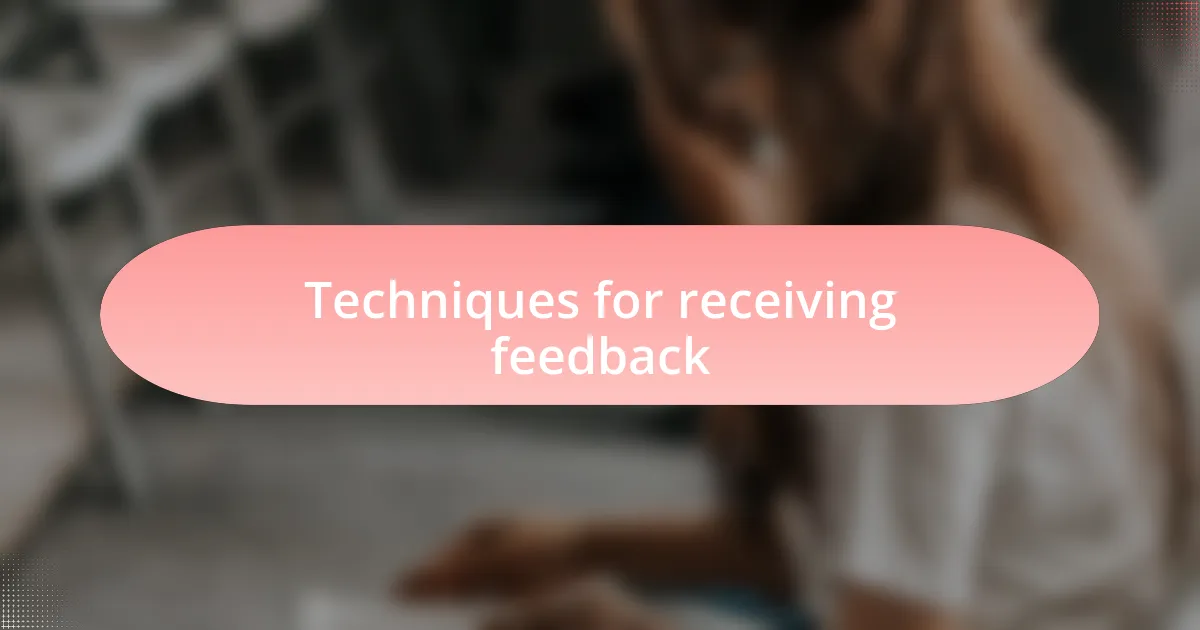
Techniques for receiving feedback
When it comes to receiving feedback, one of the techniques I rely on is actively listening. I remember a workshop where the facilitator emphasized the importance of dedicating my full attention to the feedback provider. It really struck me how much I learned just by listening without formulating my response beforehand. Have you ever noticed how this simple shift can enhance your understanding and lead to deeper insights?
Another technique I find valuable is asking open-ended questions. For instance, during a performance review, I often inquire, “What specific areas do you think I could develop further?” This not only encourages a richer dialogue but also allows me to focus on specific skills or behaviors that require attention. I’ve experienced how this approach can uncover layers of feedback I might have otherwise missed. Isn’t it rewarding to tap into someone else’s perspective for growth?
I also make it a point to express gratitude for the feedback I receive. In one instance, after receiving constructive criticism about my project management style, I took a moment to thank my colleague for their candor. This acknowledgment creates an atmosphere of trust and opens the door for future conversations. How often do we underestimate the power of gratitude in making others feel valued and heard?
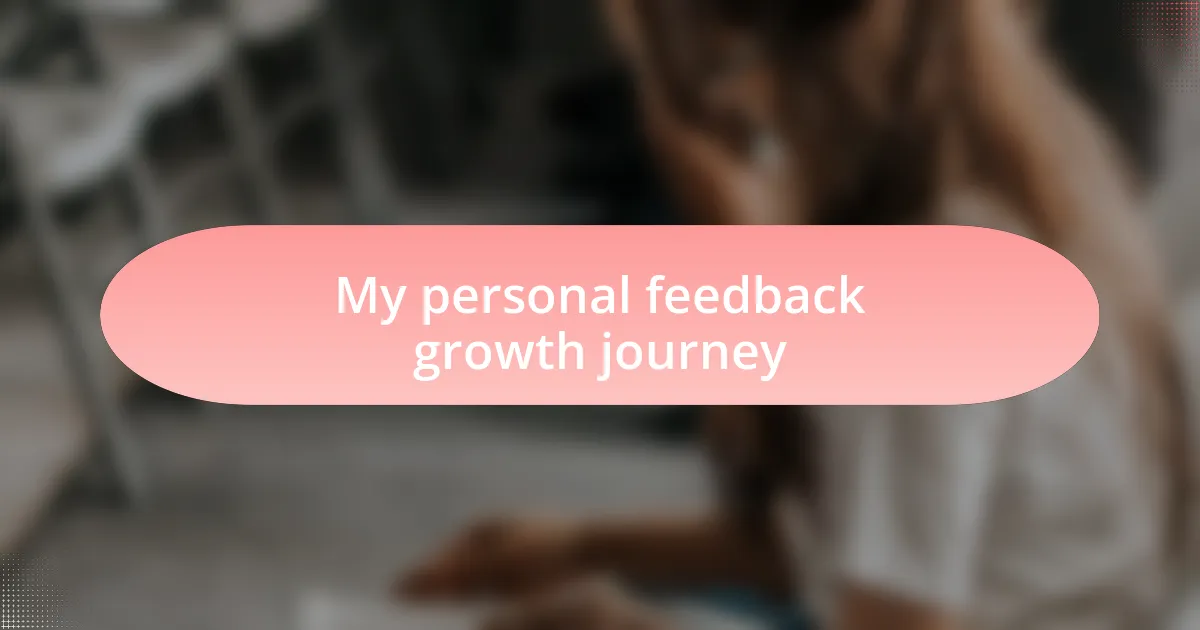
My personal feedback growth journey
I recall a pivotal moment in my feedback journey when I faced a particularly challenging project. After presenting my ideas to a team, I was met with silence. It was uncomfortable, but I chose to ask for candid feedback. Hearing my colleagues’ perspectives was eye-opening. It made me realize how my approach hadn’t resonated with them, igniting a desire in me to adjust and improve. Have you ever felt that uncomfortable silence turn into a catalyst for change?
Over time, I’ve learned to embrace vulnerability as I seek feedback. One such experience stands out: during a group exercise, I boldly shared a rough draft of my presentation. Instead of feeling embarrassed, I welcomed critiques from peers who pointed out weak spots I had overlooked. Their insights fueled my motivation to elevate my content. I found myself thinking, isn’t it interesting how vulnerability can create a space for authentic growth?
Reflecting on my feedback evolution, I see how it has shaped my career trajectory. Each piece of feedback I received was like a stepping stone, leading me to uncover my strengths and areas for improvement. The idea of viewing feedback as a gift—rather than a critique—has transformed how I approach my professional development. How do you perceive constructive criticism in your journey? For me, it’s become an invaluable part of my continuous growth process.
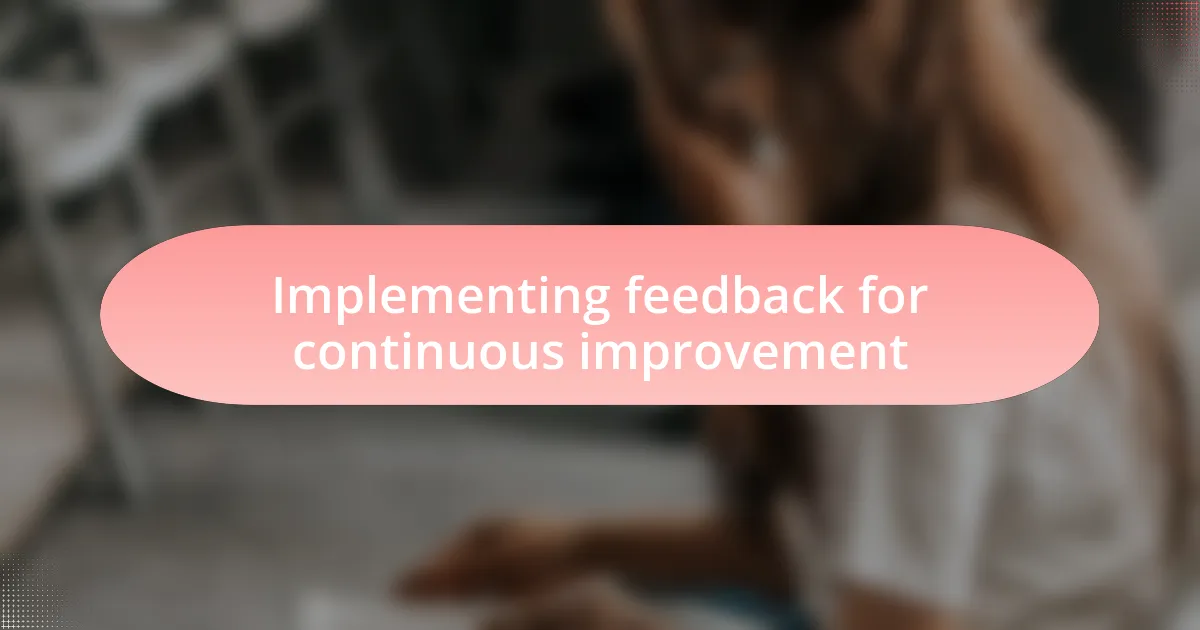
Implementing feedback for continuous improvement
Implementing feedback effectively is truly a transformative process. I remember after completing a training module, I circulated a feedback form among participants. The responses highlighted aspects that I hadn’t even considered, such as the pacing of the content. Their constructive criticism not only improved future sessions but also enhanced my ability to connect with diverse learning styles. Have you ever noticed how an unexpected comment can shift your entire perspective?
Adopting a systematic approach to feedback creates a culture of continuous improvement. In my experience, I established regular check-in meetings where my team and I could openly discuss obstacles and victories alike. This practice became a breeding ground for innovative ideas and allowed us to pivot quickly when something wasn’t working. It raised the question in my mind—how often do we take the time to engage in these reflective dialogues that propel us forward?
Feedback isn’t just a tool; it’s a mindset. I’ve started to view every critique as an invitation to explore new possibilities. One instance that struck me was when a mentor suggested I diversify my teaching methods. Initially, it felt intimidating, but embracing those suggestions led to a more dynamic learning environment. Isn’t it fascinating how shifting our attitude toward feedback can open up a world of continuous improvement?